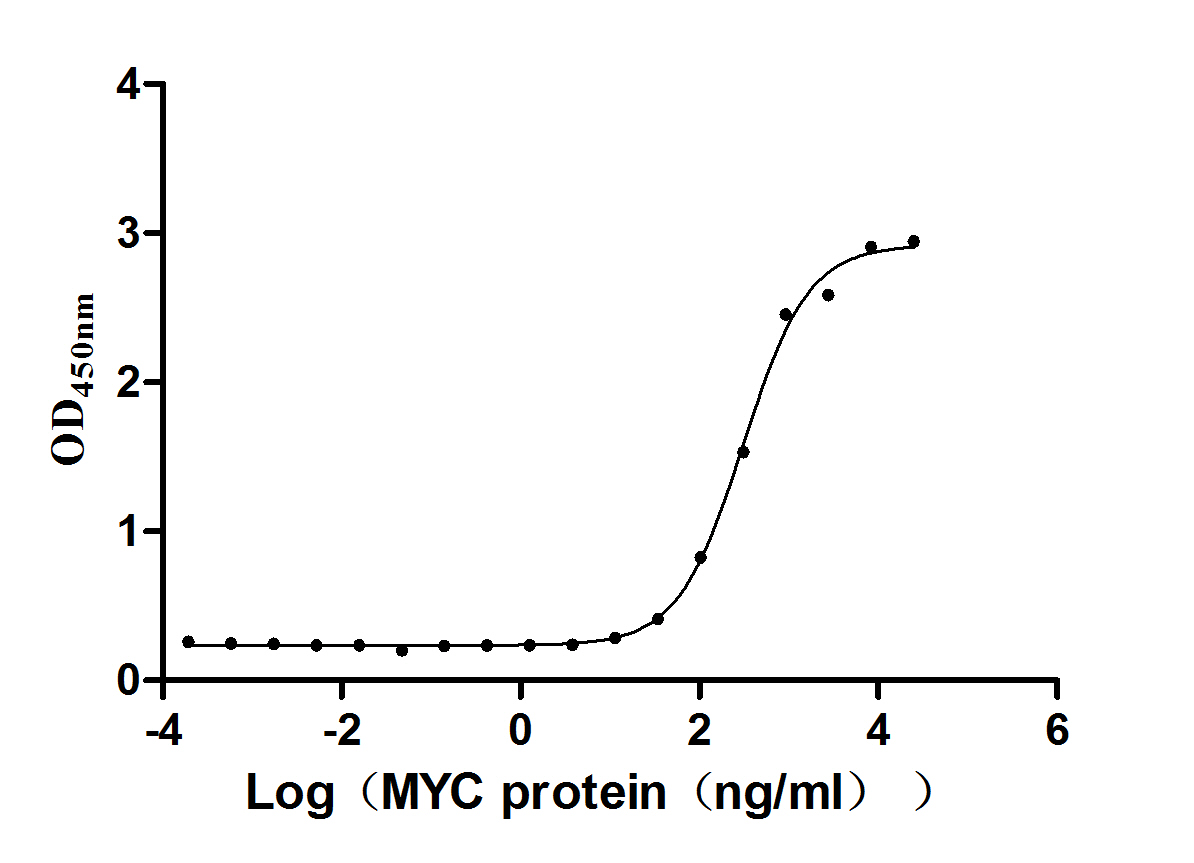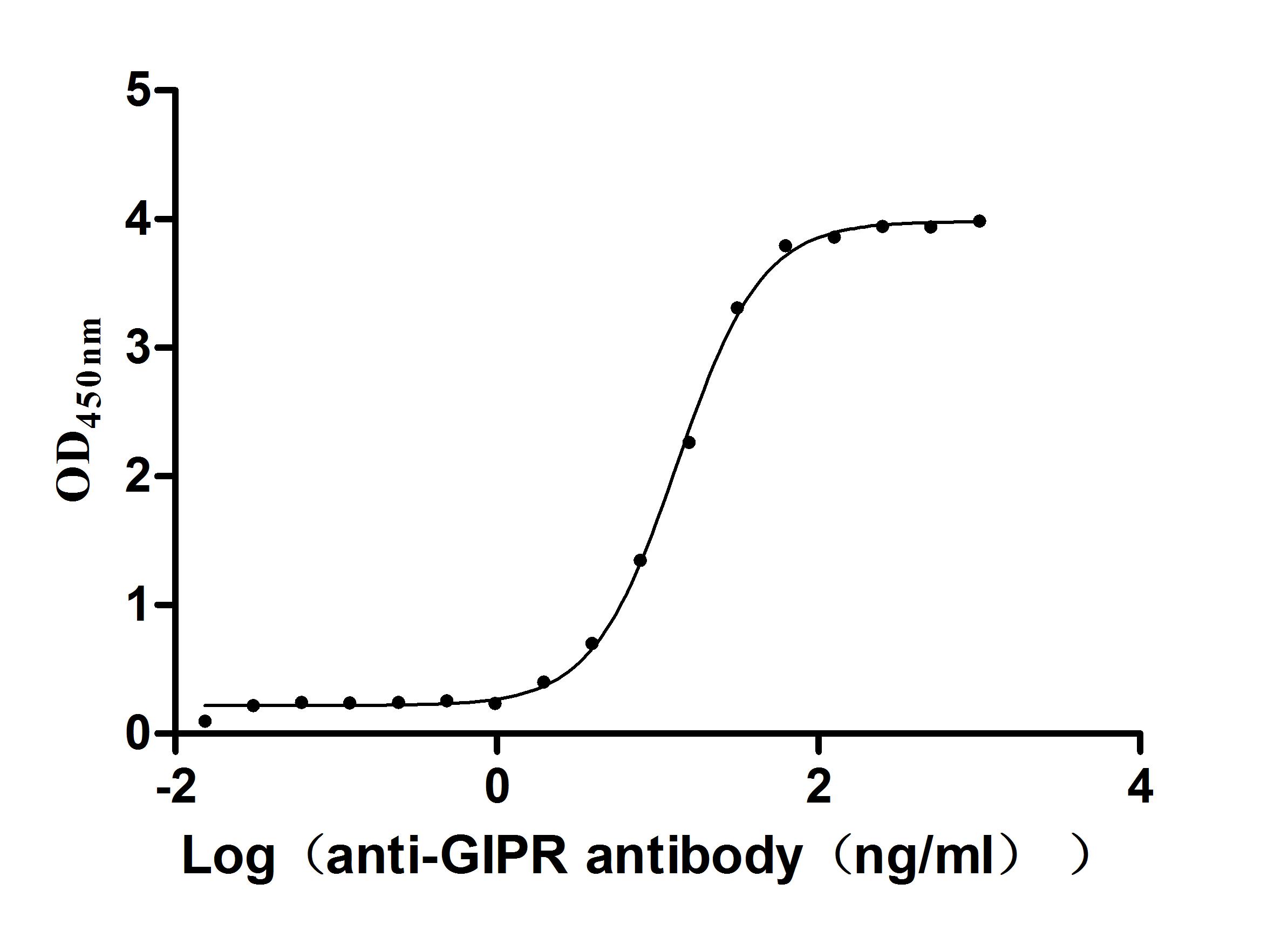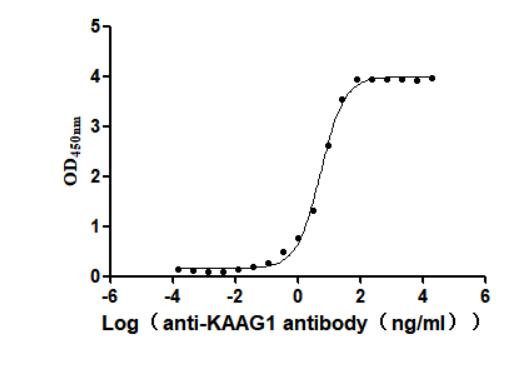Recombinant Human Eukaryotic peptide chain release factor subunit 1 (ETF1)
-
货号:CSB-YP007840HU
-
规格:
-
来源:Yeast
-
其他:
-
货号:CSB-EP007840HU
-
规格:
-
来源:E.coli
-
其他:
-
货号:CSB-EP007840HU-B
-
规格:
-
来源:E.coli
-
共轭:Avi-tag Biotinylated
E. coli biotin ligase (BirA) is highly specific in covalently attaching biotin to the 15 amino acid AviTag peptide. This recombinant protein was biotinylated in vivo by AviTag-BirA technology, which method is BriA catalyzes amide linkage between the biotin and the specific lysine of the AviTag.
-
其他:
-
货号:CSB-BP007840HU
-
规格:
-
来源:Baculovirus
-
其他:
-
货号:CSB-MP007840HU
-
规格:
-
来源:Mammalian cell
-
其他:
产品详情
-
纯度:>85% (SDS-PAGE)
-
基因名:ETF1
-
Uniprot No.:
-
别名:Cl1 protein; D5S1995; ERF; eRF1; ERF1_HUMAN; ETF1; Eukaryotic peptide chain release factor subunit 1; Eukaryotic release factor 1; Eukaryotic translation termination factor 1; MGC111066; Polypeptide chain release factor 1; Protein Cl1; RF1; Sup45 (yeast omnipotent suppressor 45) homolog like 1; SUP45L1; TB3 1; TB3-1
-
种属:Homo sapiens (Human)
-
蛋白长度:Full Length of Mature Protein
-
表达区域:2-437
-
氨基酸序列ADDPSAADR NVEIWKIKKL IKSLEAARGN GTSMISLIIP PKDQISRVAK MLADEFGTAS NIKSRVNRLS VLGAITSVQQ RLKLYNKVPP NGLVVYCGTI VTEEGKEKKV NIDFEPFKPI NTSLYLCDNK FHTEALTALL SDDSKFGFIV IDGSGALFGT LQGNTREVLH KFTVDLPKKH GRGGQSALRF ARLRMEKRHN YVRKVAETAV QLFISGDKVN VAGLVLAGSA DFKTELSQSD MFDQRLQSKV LKLVDISYGG ENGFNQAIEL STEVLSNVKF IQEKKLIGRY FDEISQDTGK YCFGVEDTLK ALEMGAVEIL IVYENLDIMR YVLHCQGTEE EKILYLTPEQ EKDKSHFTDK ETGQEHELIE SMPLLEWFAN NYKKFGATLE IVTDKSQEGS QFVKGFGGIG GILRYRVDFQ GMEYQGGDDE FFDLDDY
-
蛋白标签:Tag type will be determined during the manufacturing process.
The tag type will be determined during production process. If you have specified tag type, please tell us and we will develop the specified tag preferentially. -
产品提供形式:Lyophilized powder
Note: We will preferentially ship the format that we have in stock, however, if you have any special requirement for the format, please remark your requirement when placing the order, we will prepare according to your demand. -
复溶:We recommend that this vial be briefly centrifuged prior to opening to bring the contents to the bottom. Please reconstitute protein in deionized sterile water to a concentration of 0.1-1.0 mg/mL.We recommend to add 5-50% of glycerol (final concentration) and aliquot for long-term storage at -20℃/-80℃. Our default final concentration of glycerol is 50%. Customers could use it as reference.
-
储存条件:Store at -20°C/-80°C upon receipt, aliquoting is necessary for mutiple use. Avoid repeated freeze-thaw cycles.
-
保质期:The shelf life is related to many factors, storage state, buffer ingredients, storage temperature and the stability of the protein itself.
Generally, the shelf life of liquid form is 6 months at -20°C/-80°C. The shelf life of lyophilized form is 12 months at -20°C/-80°C. -
货期:Delivery time may differ from different purchasing way or location, please kindly consult your local distributors for specific delivery time.Note: All of our proteins are default shipped with normal blue ice packs, if you request to ship with dry ice, please communicate with us in advance and extra fees will be charged.
-
注意事项:Repeated freezing and thawing is not recommended. Store working aliquots at 4°C for up to one week.
-
Datasheet :Please contact us to get it.
相关产品
靶点详情
-
功能:Directs the termination of nascent peptide synthesis (translation) in response to the termination codons UAA, UAG and UGA. Component of the transient SURF complex which recruits UPF1 to stalled ribosomes in the context of nonsense-mediated decay (NMD) of mRNAs containing premature stop codons. Required for SHFL-mediated translation termination which inhibits programmed ribosomal frameshifting (-1PRF) of mRNA from viruses and cellular genes.
-
基因功能参考文献:
- Report molecular dynamics free energy calculations on termination complexes, where relative eRF1 binding free energies to different cognate and near-cognate codons are evaluated. The simulations show a high and uniform discrimination against the near-cognate codons, that differ from the cognate ones by a single nucleotide, and reveal the structural mechanisms behind the precise decoding by eRF1. PMID: 29127299
- The GTS loop forms a switch that is key for the multiple codon recognition capability of eRF1. PMID: 26725946
- New information has been presented on architecture of the eRF1 binding site on mammalian ribosome at various translation termination steps and on conformational rearrangements induced by binding of the release factors. PMID: 26655225
- cryo-electron microscopy (cryo-EM) structures at 3.5-3.8 A resolution of ribosomal complexes containing eRF1 interacting with each of the three stop codons in the A-site PMID: 26245381
- We characterized a region of the eRF1 N-terminal domain, the P1 pocket, that we had previously shown to be involved in termination efficiency. We identified two residues, arginine 65 and lysine 109, as critical for recognition of the three stop codons. PMID: 25735746
- C4 lysyl hydroxylation of eRF1 is required for optimal translational termination PMID: 24486019
- The role of the 41 invariant and conserved N-domain residues in stop codon decoding by human eRF1 was determined. PMID: 23435318
- This work provides mechanistic insight into the coordination between GTP hydrolysis by eRF3 and subsequent peptide release by eRF1. PMID: 23091004
- s propose that structural variability in the GTS loop may underline the switching between omnipotency and unipotency of eRF1, implying the direct access of the GTS loop to the stop codon. PMID: 22383581
- The NMR data show that the N-domain of human eRF1 exists in two conformational states. PMID: 22517631
- Molecular modeling of eRF1 in the 80S termination complex showed that eRF1 fragments neighboring guanines and adenines of stop signals are compatible with different N domain conformations of eRF1. PMID: 21602268
- By molecular modeling, the eRF1 molecule can be fitted to the A site proximal to the P-site-bound tRNA and to a stop codon in mRNA via a large conformational change to one of its three domains. PMID: 20688868
- Data show that depleting eRF1 increased the Gag-Pol to Gag ratio in cells infected with replication-competent virus. PMID: 20418372
- bacterial polypeptide release factor RF2 is structurally distinct from eukaryotic eRF1 PMID: 11779511
- The invariant uridine of stop codons contacts the conserved NIKSR loop in the ribosome PMID: 12356746
- codon dependence of human eRF1 binding to the mRNA-ribosome complex PMID: 12909007
- the intracellular concentration of the eukaryotic release factor 1 (eRF1) is a critical parameter influencing the efficiency of amino acid incorporation by nonsense suppression PMID: 15716307
- Glu55 and Tyr125 residues in the N domain of eRF1 are important for eRF1's decoding function. PMID: 16282590
- we describe a novel complex that contains the NMD factors SMG-1 and Upf1, and the translation termination release factors eRF1 and eRF3 (SURF). PMID: 16452507
- Results shows eRF1 promotes GTP binding by eRF3. PMID: 16797113
- Interface of the interaction of the middle domain of human translation termination factor eRF1 with eukaryotic ribosomes PMID: 19140327
- Molecular dynamics simulations show that there is no structural effect on the free RF1 release factor caused by methylation of glutamine185, suggesting that its role is intimately associated with the ribosome environment. PMID: 19265422
显示更多
收起更多
-
亚细胞定位:Cytoplasm.
-
蛋白家族:Eukaryotic release factor 1 family
-
数据库链接:
HGNC: 3477
OMIM: 600285
KEGG: hsa:2107
STRING: 9606.ENSP00000353741
UniGene: Hs.483494
Most popular with customers
-
Recombinant Human Glypican-3 (GPC3) (G537R), partial (Active)
Express system: Mammalian cell
Species: Homo sapiens (Human)
-
Recombinant Human papillomavirus type 16 Protein E7 (E7) (Active)
Express system: E.coli
Species: Human papillomavirus type 16
-
Recombinant Human Claudin-4 (CLDN4)-VLPs (Active)
Express system: Mammalian cell
Species: Homo sapiens (Human)
-
Recombinant Human Oncostatin-M (OSM), partial (Active)
Express system: Mammalian cell
Species: Homo sapiens (Human)
-
Recombinant Macaca Gastric inhibitory polypeptide receptor(GIPR), partial (Active)
Express system: yeast
Species: Macaca fascicularis (Crab-eating macaque) (Cynomolgus monkey)
-
Recombinant Human Cadherin-6(CDH6),partial (Active)
Express system: Mammalian cell
Species: Homo sapiens (Human)
-
Recombinant Human Kidney-associated antigen 1(KAAG1) (Active)
Express system: E.coli
Species: Homo sapiens (Human)
-
Recombinant Human Kidney-associated antigen 1(KAAG1) (Active)
Express system: Baculovirus
Species: Homo sapiens (Human)


-AC1.jpg)

















